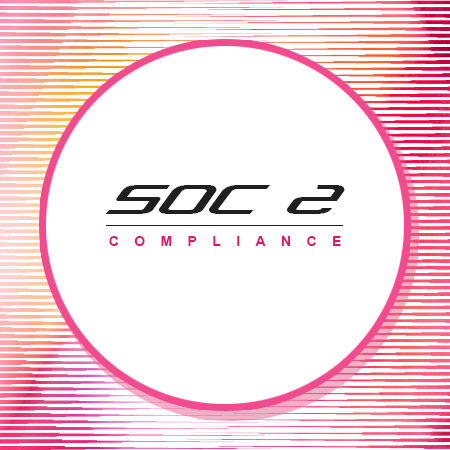Why is SOC 2 Compliance Important?
Compliance with SOC 2 requirements indicates that an organization maintains a high level of information security. Strict compliance requirements (tested through on-site audits) can help ensure sensitive information is handled responsibly.
Complying with SOC 2 provides:
- Improved information security practices – via SOC 2 guidelines, the organization can better defend itself better against cyber attacks and prevent breaches.
- A competitive advantage – because customers prefer to work with service providers that can prove they have solid information security practices, especially for IT and cloud services.
Who can Perform a SOC Audit?
SOC audits can only be performed by independent CPAs (Certified Public Accountants) or accounting firms.
AICPA has established professional standards meant to regulate the work of SOC auditors. In addition, certain guidelines related to the planning, execution and oversight of the audit must be followed. All AICPA audits must undergo a peer review.
CPA organizations may hire non-CPA professionals with relevant information technology (IT) and security skills to prepare for SOC audits, but final reports must be provided and disclosed by the CPA.
If the SOC audit conducted by the CPA is successful, the service organization can add the AICPA logo to their website.
SOC 2 Security Criterion: a 4-Step Checklist
Security is the basis of SOC 2 compliance and is a broad standard common to all five Trust Service Criteria.
SOC 2 security principles focus on preventing the unauthorized use of assets and data handled by the organization. This principle requires organizations to implement access controls to prevent malicious attacks, unauthorized deletion of data, misuse, unauthorized alteration or disclosure of company information.
Here is a basic SOC 2 compliance checklist, which includes controls covering safety standards:
- Access controls—logical and physical restrictions on assets to prevent access by unauthorized personnel.
- Change management—a controlled process for managing changes to IT systems, and methods for preventing unauthorized changes.
- System operations—controls that can monitor ongoing operations, detect and resolve any deviations from organizational procedures.
- Mitigating risk—methods and activities that allow the organization to identify risks, as well as respond and mitigate them, while addressing any subsequent business.
Keep in mind that SOC 2 criteria do not prescribe exactly what an organization should do—they are open to interpretation. Companies are responsible for selecting and implementing control measures that cover each principle.
SOC 2 Compliance Requirements: Other Criteria
Security covers the basics. However, if your organization operates in the financial or banking industry, or in an industry where privacy and confidentiality are paramount, you may need to meet higher compliance standards.
Customers prefer service providers that are fully compliant with all five SOC 2 principles. This shows that your organization is strongly committed to information security practices.
In addition to the basic security principles, here is how to comply with other SOC 2 principles:
- Availability—can the customer access the system according to the agreed terms of use and service levels?
- Processing integrity—if the company offers financial or eCommerce transactions, the audit report should include administrative details designed to protect the transaction. For example, is the transmission encrypted? If the company provides IT services, such as hosting and data storage, how is data integrity maintained within those services?
- Confidentiality—are there any restrictions on how data is shared? For example, if your company has specific instructions for processing personally identifiable information (PII) or protected health information (PHI), it should be included in the audit document. The document should specify data storage, transfer, and access methods and procedures to comply with privacy policies such as employee procedures.
- Privacy—how does the organization collect and use customer information? The privacy policy of the company must be consistent with the actual operating procedures. For example, if a company claims to warn customers every time it collects data, the audit document must accurately describe how warnings are provided on the company website or other channel. Personal data management must, at a minimum, follow the AICPA’s Privacy Management Framework (PMF).
SOC 1 vs SOC 2
SOC 1 and SOC 2 are two different compliance standards, with different goals, both regulated by the AICPA. SOC 2 is not an “upgrade” of SOC 1. The table below explains the differences between SOC 1 and SOC 2.
|
SOC 1 |
SOC 2 |
| Purpose |
Helps a service organization report on internal controls which pertain to financial statements by its customers. |
Helps a service organization report on internal controls that protect customer data, relevant to the five Trust Services Criteria. |
| Control objectives |
A SOC 1 audit covers the processing and protection of customer information across business and IT processes. |
A SOC 2 audit covers all combinations of the five principles. Certain service organizations, for example, deal with security and availability, while others may implement all five principles due to the nature of their operations and regulatory requirements. |
| Audit intended for |
The CPA of the audited organization’s managers, external auditors, user entities (customers of the audited service organization), and CPAs who audit their financial statements. |
Executives, business partners, prospects, compliance supervisors, and external auditors of the audited organization. |
| Audit used for |
Helps user entities understand the impact of service organization controls on their financial statements. |
Overseeing service organizations, supplier management plans, internal corporate governance and risk management processes, and regulatory oversight. |
SOC 2 Compliance with Check Point
Many Check Point’s products met the SOC 2 Compliance applicable trust services criteria, such as- CloudGuard Posture Management, CloudGuard Connect, Harmony Products, Infinity portal and more. See the full list here .






